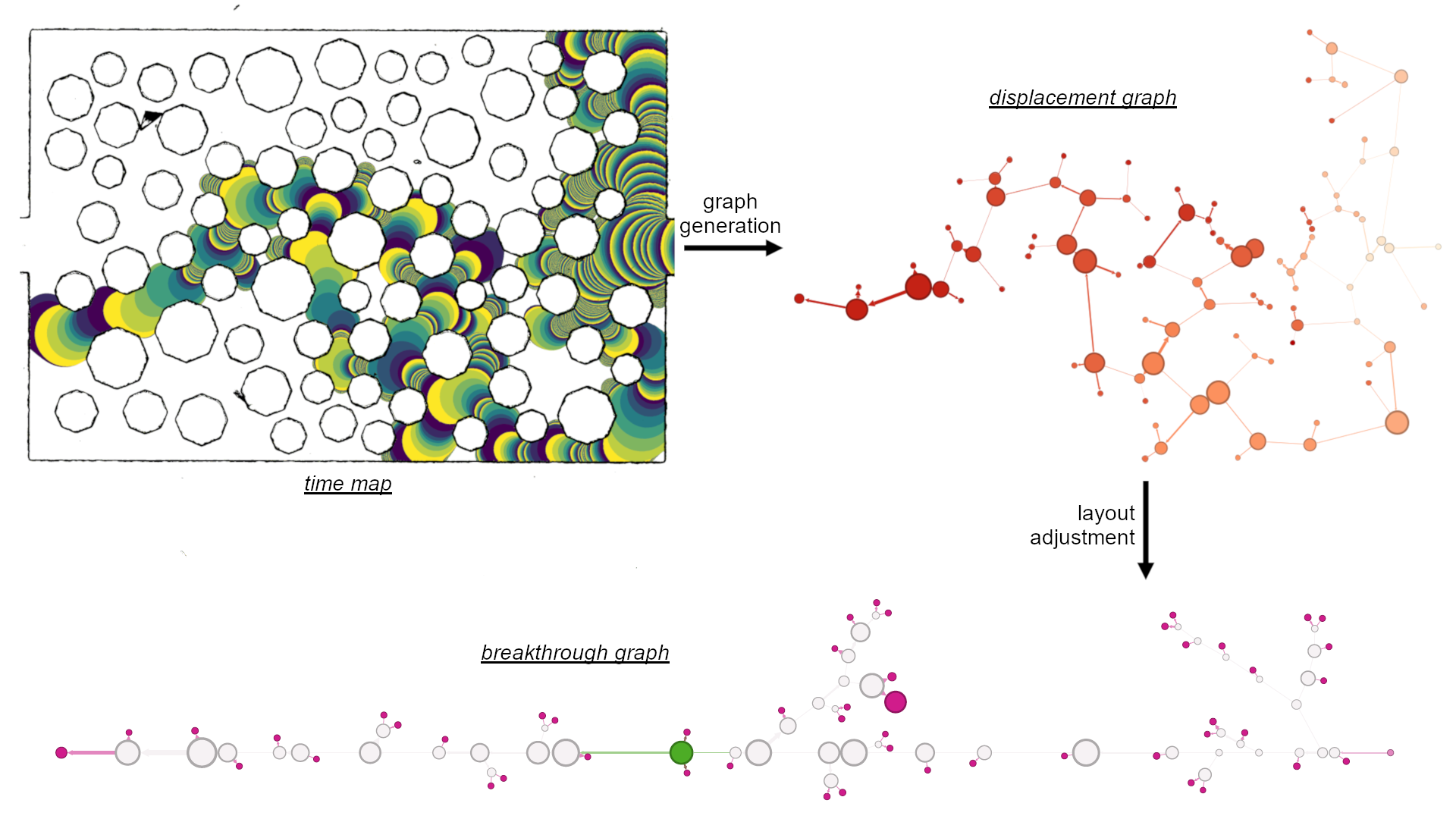Visual Analysis of Displacement Processes in Porous Media using Spatio-Temporal Flow Graphs
Alexander Straub, Nikolaos Karadimitriou, Guido Reina, Steffen Frey, Holger Steeb, Thomas Ertl
DOI: 10.1109/TVCG.2023.3326931
Room: 103
2023-10-25T23:00:00ZGMT-0600Change your timezone on the schedule page
2023-10-25T23:00:00Z

Fast forward
Full Video
Keywords
Comparative visualization, ensemble, graph, porous media.
Abstract
We developed a new approach comprised of different visualizations for the comparative spatio-temporal analysis of displacement processes in porous media. We aim to analyze and compare ensemble datasets from experiments to gain insight into the influence of different parameters on fluid flow. To capture the displacement of a defending fluid by an invading fluid, we first condense an input image series to a single time map. From this map, we generate a spatio-temporal flow graph covering the whole process. This graph is further simplified to only reflect topological changes in the movement of the invading fluid. Our interactive tools allow the visual analysis of these processes by visualizing the graph structure and the context of the experimental setup, as well as by providing charts for multiple metrics. We apply our approach to analyze and compare ensemble datasets jointly with domain experts, where we vary either fluid properties or the solid structure of the porous medium. We finally report the generated insights from the domain experts and discuss our contribution’s advantages, generality, and limitations.